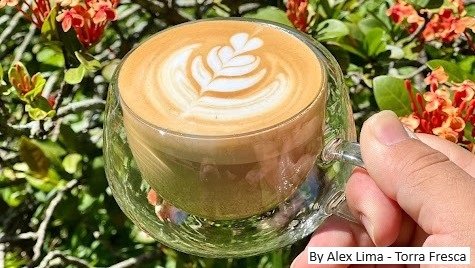
The first thing you need to have to prepare a good espresso is a good coffee bean, like the ones from Torra Fresca in Brazil.
Anyone can ruin good coffee, but nobody can transform bad coffee into a good one.
How do you find good coffee?
I could give a few recommendations, but long story short, it depends on your taste, freshness and the roaster.
The first thing you need to understand is what kind of coffee you like. This discovery is a journey and can be very complex.
If you are just starting, I would recommend you to try to understand if you prefer the ones described as sweet, with notes of caramel, chocolate and nuts, we’ll call it the classic. Or some coffee described as juicy or fruity, with notes red or yellow fruits, fruity, slightly acidic, we’ll name it fruity here. And finally, the coffee described as floral, very common when you buy a Geisha or Ethiopian, which we’ll call floral in this post.
To practice your perception, a french press or V60 will give more clarity and it will be easier to distinguish the differences. But your best V60 may not be your best espresso. Then, you will also need to try several espressos in specialty coffee places to understand your espresso style.
If you liked your shot, you can ask how it was prepared (temperature, pressure, how many grams in and out, beans used, and extraction time are the basic parameters) and try to reproduce at home.
Ok, so now you know that you like floral espressos, you have your favorite coffee place, and you are looking for other floral espressos in the web, in your trips or close to your home. Remember to pay attention to one very important information: roasting date.
Coffee needs to be fresh, correcty stored and grinded right before the extraction.
I’ll write about storage and grinding in other posts, but back to the freshness, ideally a coffee for espresso shall be used between 10-30 days after roasting and no more than 60 days. If you can’t see this information, ask it, and if they don’t know, that’s a red flag.
Imediatelly after roasting, CO2 will be continuously be released, as well as the complex volatile compounds responsible for the notes that you read on the label and that you are looking for. And last reminder: these coffee are rarely found on supermarkets or big market places such as Amazon. I’d look for a local roaster or online but directly from the roasters.
Free fall in the rabit hole:
If you want to know more about specialty coffee, methods, recipes, roasting, tasting experiments, etc, I recommend 3 channels on YouTube, for you to start, 2 in English and one in Portuguese:
And you can also check my videos about espresso machine modifications in http://www.youtube.com/@EspressoHackers
PS: this post is not sponsored. The picture is a tribute to a friend of mine, a great artist in the coffee roasting and latte art.
